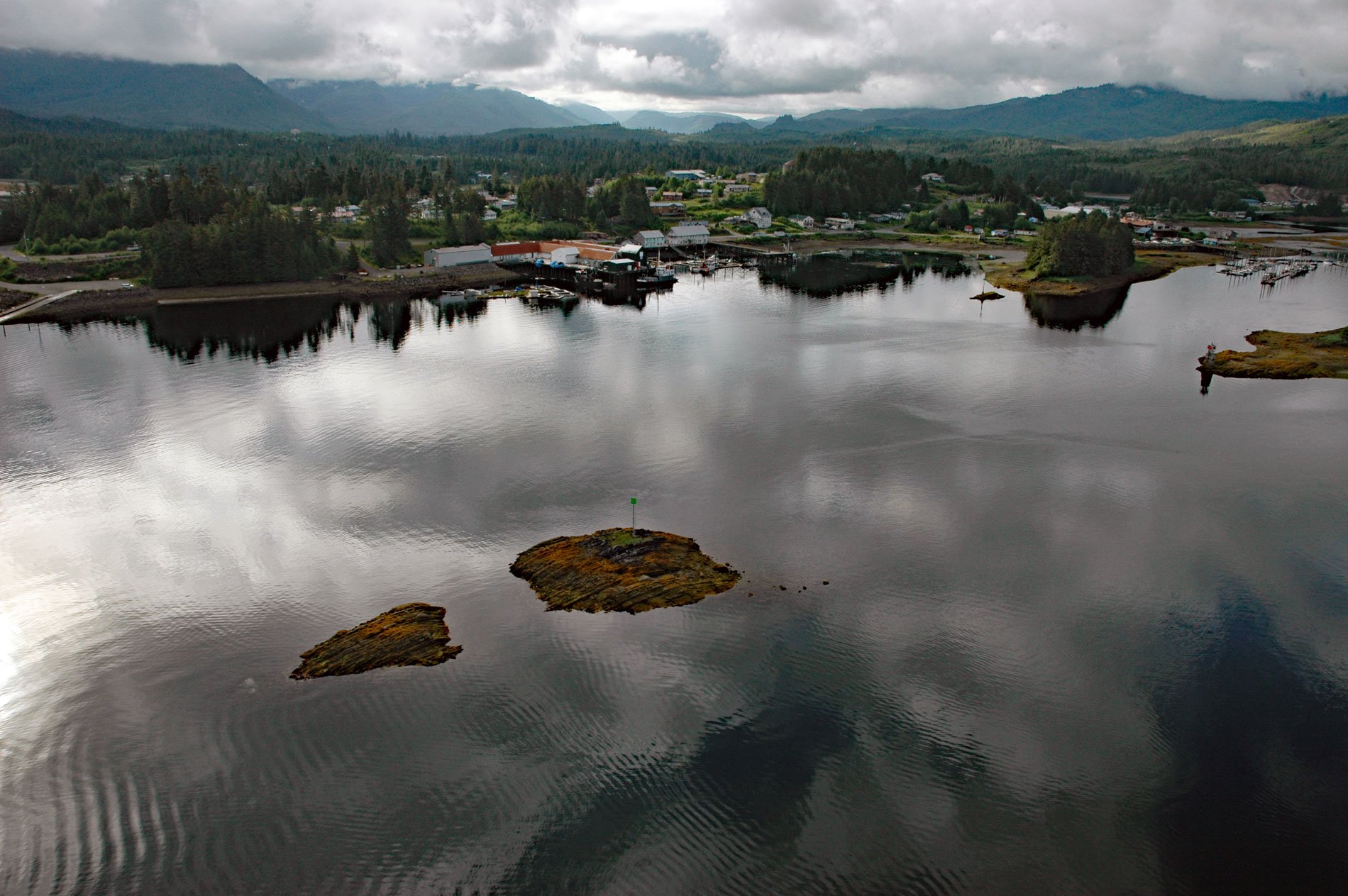Klawock is a community on the estuary of the Klawock River on the west coast of Prince of Wales Island in the Alexander Archipelago of Southeast Alaska, about 58 miles (93 km) northwest of Ketchikan and 6 miles (10 km) northeast of Craig, Alaska. The Klawock River watershed drains an area of 29,000 acres (11,736 ha) situated around Klawock Lake and flows about 1 mile (1.6 km) from the lake outlet to Klawock Inlet. Prince of Wales Island is part of the Alexander terrane and the bedrock forming the watershed is dominated by the Klawak Formation that developed during the Pennsylvanian period of the late Paleozoic, or roughly 300 million years ago. The formation consists of calcareous sandstone and siltstone partially metamorphosed into limestone and chert-pebble conglomerate containing abundant fossils of brachiopods, corals, and bryozoans.
The ancestors of many Klawock residents originated from the historical Tlingit villages of Tuxekan and Shakan, as well as clan sites scattered across Prince of Wales Island. Klawock was the site of a summer fish camp with an abundant supply of sockeye salmon provided by the Klawock River and Klawock Lake. In the 1700s, Prince of Wales Island became the transition area between the Haida people to the south and the Tlingit people to the north. They sustained themselves with an elaborate economic system including fishing, hunting as well as intricate trading networks. In 1779, the Spanish explorer Ignacio de Arteaga visited Klawock and reportedly named it ‘La Galeria’, which means ‘the Galley’, reputedly because Klawock was surrounded by water during high tides. In 1868, George Hamilton established a trading post and a salmon saltery at Klawock, which he later sold to the San Francisco-based company of Sission, Wallace & Company. In 1878, the first cannery in Alaska was built at Klawock by the North Pacific Trading and Packing Company and operated mostly by contracted Chinese laborers. In 1920 and 1924, two more canneries were built in Klawock, as well as a sawmill to meet the demand for construction lumber. With the passage of the Wheeler-Howard Act in 1934, federal funding became available to Klawock for cannery operations. The Act required Klawock residents to vote to keep Klawock free of liquor and required the establishment of a nonprofit corporation, the Klawock Cooperative Association, to be the owner and operator of the Klawock Cannery. In 1971, construction began on the Alaska Timber Corporation sawmill in Klawock, now owned by Viking Lumber Company, which has since provided intermittent employment.
By the late 1800s, salmon populations in Southeast Alaska were plummeting due to unregulated commercial fishing. In 1889, U.S. Congress adopted the Alaska Salmon Fisheries Act that prohibited the construction of any structures that impeded salmon migrations. Funding for enforcement of the Act was first available in 1892 and staffing was one fishery agent for the entire District of Alaska. In 1896, Congress amended the act to ban commercial fishing above tidewater in streams less than 500 feet wide. The amended Act also required canneries to report harvests and to establish hatchery programs. Several hatcheries were built, including one on Klawock Lake, but these efforts had little apparent success and by 1936 all hatcheries in Alaska had closed. In the mid-1970s, commercial salmon harvests in Alaska reached near-historic lows. To counteract declining commercial salmon harvests, the state embarked on an ambitious salmon enhancement program, and by 1988 the Alaska Department of Fish and Game was operating 16 hatcheries throughout Alaska, which were annually producing more than 300 million juvenile salmon. In 1977, a State of Alaska salmon hatchery was built on Klawock Lake very near the site of the historical hatchery and the Alaska Department of Fish and Game operated the hatchery from 1978 through mid-1993. In 1993, hatchery operations of the state-owned facility were contracted to the City of Klawock. In 1996, the Prince of Wales Hatchery Association, Inc. was contracted to operate the facility, and in 2016, the Southern Southeast Regional Aquaculture Association took over operations with a maximum production capacity of 5 million coho salmon eggs and 1 million sockeye salmon eggs. Read more here and here. Explore more of Klawock and Prince of Wales Island here:

